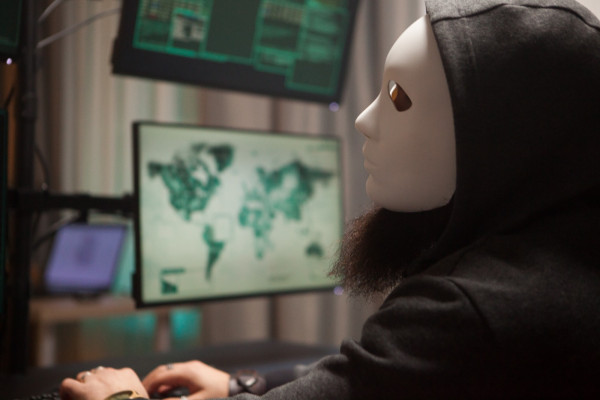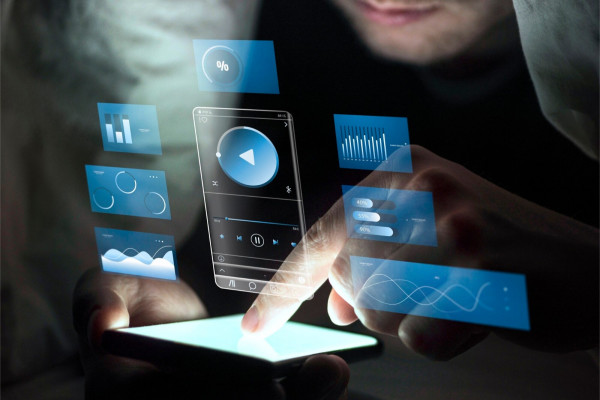A digital twin is a digital representation of a physical entity or system that provides numerous benefits in the digital realm. It acts as a mirror reflection of something physical in the digital world, offering deeper insights and enabling advanced functionalities. Digital twins are created and maintained using sensors and IoT technology to collect and analyze data, with machine learning playing a crucial role. The applications of digital twins span across various industries; in manufacturing, they optimize supply chains and streamline operations, in healthcare, they facilitate advancements in personalized treatments, and in urban planning, they contribute to the development of smart cities. Despite the immense potential of digital twins, data privacy and security concerns remain significant, and integrating and scaling complex systems can be daunting. However, advancements in artificial intelligence and virtual reality bring exciting possibilities for the future of digital twins. In this blog, we will explore the concept of digital twins, uncovering what they are, how they function, and their essential components.
Understanding the Core Components
The essential elements of a Digital Twin are a physical entity, a virtual representation, and real-time data integration. These components interact to create a synchronized digital counterpart.
The physical entity refers to the actual object or system that the Digital Twin represents. It can be anything from a machine on a factory floor to an entire city infrastructure. The physical entity serves as the foundation for the Digital Twin.
The virtual representation is the digital replica or model of the physical entity. It captures the characteristics, behavior, and attributes of the real-world object or system. The virtual representation can be created using various techniques such as 3D modeling or simulation software. It is through this virtual counterpart that insights and advanced functionalities of the physical entity are obtained.
Real-time data integration is a crucial component of a Digital Twin. It involves collecting and analyzing data from sensors and Internet of Things (IoT) devices that are embedded in the physical entity. This data is then fed into the virtual representation, allowing it to mimic the real-time behavior and performance of the physical entity. By integrating real-time data, the Digital Twin can provide accurate and up-to-date information about the physical entity.
Data Collection and Integration
Sensors, IoT devices, and data sources play a crucial role in collecting real-time information from the physical entity and integrating diverse data streams seamlessly. These technologies enable businesses to gather accurate and up-to-date data for analysis and simulation in the virtual twin environment.
By being integrated into the physical entity, these sensors continuously gather data and transmit it to the Digital Twin platform. The data collected from these sensors serves as the primary source of information for creating the virtual counterpart.
In addition to sensors, IoT devices also contribute to the data collection process. These devices are responsible for connecting different components of the physical entity, such as machinery or infrastructure, to the Internet. By enabling connectivity, IoT devices enable seamless data transmission from the physical entity to the Digital Twin.
Furthermore, data sources such as control systems, databases, and external sources also provide valuable information to the Digital Twin. These sources can include historical data, operational data, environmental data, and any other relevant information that is required for a comprehensive understanding of the physical entity.
Creating the Virtual Replica
The process of creating a virtual representation based on collected data involves incorporating various types of information into the digital model. This includes geometric, functional, and operational data.
Geometric information refers to the physical dimensions, shape, and structure of the object being modeled. This data is collected through sensors or other measurement devices that capture accurate geometric details.
Functional information focuses on the behavior and performance of the physical entity. Sensors collect data on how the object operates, its functionalities, and any specific characteristics related to its purpose.
Operational information involves monitoring and recording the real-time operational aspects of the physical entity. This includes data on its current state, operational parameters, environmental conditions, and any other factors that affect its functioning.
Incorporating all this information into the digital model requires advanced algorithms and mathematical models. These algorithms process and organize the collected data, converting it into a virtual representation that accurately reflects the physical entity. The geometric, functional, and operational data are combined, synchronized, and mapped onto the digital model, ensuring that it represents the real-world object as closely as possible.
Simulation and Analysis
The virtual twin is a powerful tool that enables simulations and analyses of real-world scenarios. By creating a digital replica of a physical entity, it allows businesses to test and explore several scenarios without real-world consequences. This capability helps businesses optimize performance, identify risks, and develop strategies for improvement.
Businesses can leverage the virtual twin to gain predictive insights and optimize performance in various ways. By integrating data from multiple sources such as sensors, historical records, and external databases, the virtual twin facilitates in-depth analyses, enabling data analytics, and machine learning to identify patterns, predict future trends, and generate valuable insights. This capability empowers businesses to make informed decisions, optimize operations, and enhance the efficiency and effectiveness of their systems.
Real-Time Monitoring and Feedback Loop
Real-time data is crucial for ensuring that a digital twin operates efficiently and accurately mirrors its corresponding physical entity. Sensors and other data-collection tools gather information about the physical entity and send it to the digital twin via the Internet of Things (IoT), enabling the digital twin to constantly update and refine its model.
This up-to-date information then allows for real-time analysis of operational performance, identifying patterns and insights that can be used to improve decision-making. These insights can be used to adjust operational settings or implement new procedures to optimize the physical entity’s performance.
The feedback loop between the digital twin and the physical entity is critical for establishing a reliable and efficient system that improves over time. As the digital twin continues to gather data from the physical entity and analyze its performance, it can provide feedback to inform future decision-making and operational adjustments. This feedback loop allows for continuous optimization and improvement, making the digital twin an invaluable tool for enhancing the performance of its corresponding physical entity.
Predictive Analytics and AI Integration
Predictive analytics and AI algorithms play a vital role in enhancing the capabilities of a digital twin. By leveraging machine learning techniques, these algorithms can analyze the real-time data collected from sensors and other data-collection tools. Through pattern recognition and data modeling, machine learning algorithms can identify patterns and anomalies within the data.
Such algorithms can predict potential issues or operational inefficiencies by analyzing historical data and correlating it with current performance indicators. For example, if a specific pattern of data is associated with a past performance issue, the machine learning algorithm can recognize similar patterns in the real-time data and alert operators or decision-makers about the potential issue before it escalates.
Furthermore, the predictive capabilities of AI algorithms enable proactive decision-making. By forecasting future performance trends and identifying potential issues, operators can make informed decisions to optimize the physical entity’s operations, mitigate risks, and improve overall performance.
Challenges and Considerations
As with any emerging technology, digital twins face several challenges, including data security, scalability, and accuracy concerns. However, there are strategies and solutions that can help overcome these obstacles.
Data security is a major concern in the realm of digital twins, as it involves storing and processing sensitive information. To mitigate this challenge, organizations implementing digital twins should prioritize robust cybersecurity measures. Implementing encryption protocols, access controls, and secure authentication mechanisms can help safeguard the data stored in digital twins. Regular security audits and updates should also be conducted to stay ahead of potential threats and vulnerabilities.
Scalability is another challenge that arises when dealing with multiple digital twins. As the number of digital twins increases, it becomes crucial to establish a well-designed infrastructure that can handle the growing demand. Employing cloud-based technologies and distributed computing can enhance scalability by providing the necessary resources to efficiently manage and process larger volumes of data. Additionally, employing standardized protocols and architectures can streamline the integration of multiple digital twins, reducing logistical complexities.
Ensuring accuracy in digital twins is essential to achieve reliable and meaningful insights. Data validation processes, sensor calibration, and continuous monitoring are key practices to maintain accuracy. Organizations should establish quality control mechanisms to verify the integrity and consistency of data inputs. Implementing machine learning algorithms and advanced analytics can further improve accuracy by identifying patterns and anomalies in the data generated by digital twins.
Advancements and Future Prospects
Ongoing advancements in digital twin technology are leading to increased complexity and fidelity. As digital twin capabilities continue to evolve, they are becoming more sophisticated in their ability to mirror and simulate real-world entities with greater accuracy and detail.
One of the main driving factors behind this increased complexity and fidelity is the integration of artificial intelligence (AI) and machine learning (ML) algorithms into digital twins. These technologies enable digital twins to analyze and learn from vast amounts of data, allowing them to make accurate predictions and optimize their performance in real-time. By continuously refining their understanding and representation of their physical counterparts, digital twins can provide valuable insights and support decision-making processes in various sectors. the future of digital twins holds immense potential for various sectors. As technology continues to advance, digital twins will become more sophisticated, enabling businesses and organizations to make data-driven decisions, optimize processes, and drive innovation. With their increasing complexity and fidelity, digital twins can revolutionize industries and shape a more efficient, sustainable, and interconnected future.
Conclusion
STL Digital’s Digital Twin solutions enable organizations to monitor, analyze, and optimize their physical assets by creating a virtual counterpart. They have key components and diverse applications, offering benefits that transform the operational landscape and enhance decision-making. There are, however, challenges, such as data privacy and security concerns, integration, and scalability issues. Despite these challenges, advancements in artificial intelligence and virtual reality offer new possibilities that could revolutionize manufacturing, urban planning, and healthcare. The potential of digital twins is enormous, and as we move forward, it will be exciting to witness their further evolution and widespread adoption in various industries.



